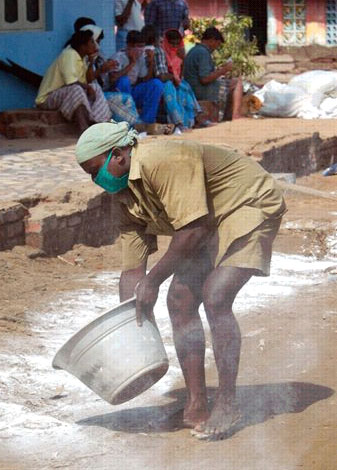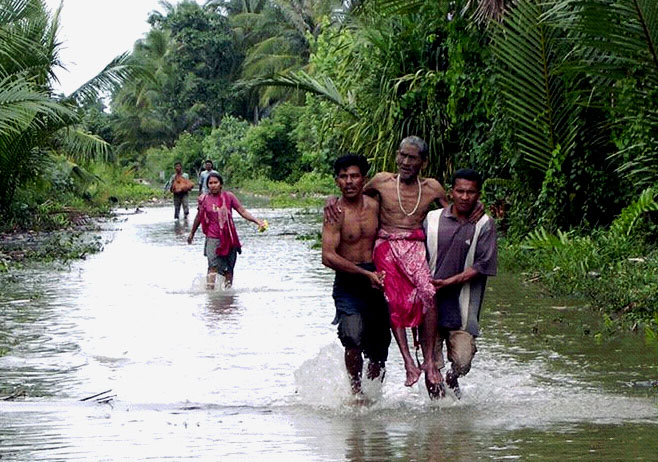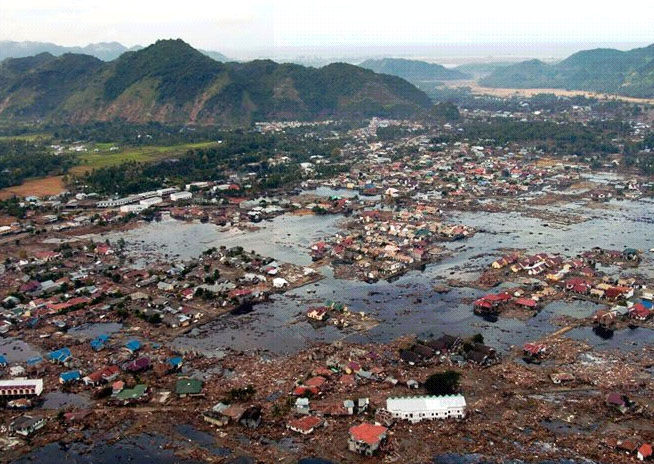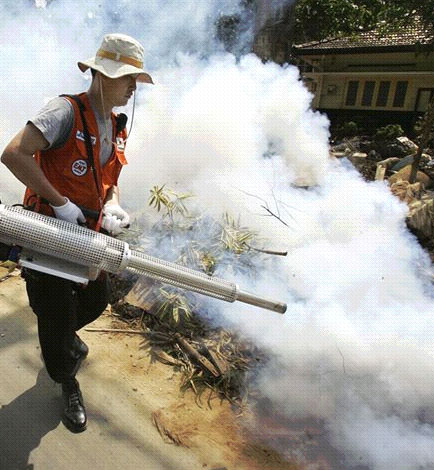| Immediate and long-term impacts: | health |
| The reported number of deaths to-date from the tsunami that hit southern Asia has reached 150,637. Indonesia was hit the hardest of all the countries affected, reporting a devastating 104,055 dead. Health officials have warned that many more may die of disease in the aftermath. In countries where clean water, sanitation systems and proper health care are already compromised, a natural disaster puts those who survived at further risk. Diseases that are of most concern are those already present in the population, such as cholera (and related diarrheal diseases such as dysentary, typhoid, shigellosis), malaria, dengue fever and even pneumonia. |
| Description of Diseases |
Cholera is a water-borne, toxic intestinal infection that is endemic to Indonesia. Without a supply of clean drinking water it may become epidemic among the survivors. Those infected can lose up to two gallons of body fluid a day and without treatment the bacteria can kill within hours. It would be impossible to ship enough bottled water to the region making the purification of existing water a more logical solution. |
| Malaria and dengue fever are categorized as vector-borne diseases, transmitted by mosquitoes. Giant pools of stagnant water were left behind by the tsunami, creating a perfect breeding ground for the insects. Those left without shelter are particularly at risk of infection because they are forced to spend most of their time outdoors exposed to the disease. |
| Pneumonia and other respiratory infections pose a lesser risk to tsunami survivors, but close human contact in emergency shelters may cause such infections to proliferate, putting the elderly and the very young at risk. |
| Corpses do not pose a risk of disease epidemics after natural disasters. Most infections do not survive after death of the host, with few exceptions. Of course, those routinely handling corpses should exercise caution. |
 ...
. ...
. |
Indonesia Situational Report (As of Jan 8, 2005)
|
An estimated three to five million people are currently without homes. Over 150,000 are at extreme risk of contracting a disease if an outbreak occurs. Availability of clean drinking water is of critical concern in the affected regions, especially in Banda Aceh, Indonesia. The Aceh region was the hardest hit, making it difficult to access because of the extensive damage to infrastructure, making the assessment of need and distribution of aid particularly difficult in this area. The availability of drinking water, medical supplies, adequate sanitation systems, and the mental health of survivors is largely unknown. At this time no outbreaks of disease have been reported in the affected areas but an increase in isolated cases of diarrhoeal diseases has been reported as well as numerous cases of tetanus. |

 ..................
.....
..................
..... 
| Another, less urgent concern, is the mental health of those affected by the disaster. Many countries have worked hard to put children back in school to give them shelter during the day, a safe place to work through their emotional trauma, and to help re-establish a routine in their daily lives. The mental health of those affected by the tragedy may also benefit from the amount of work it takes to survive. The physical task of working to restore ravaged communities also helps emotionally to seal with grief and loss. Furthermore, establishing a set routine where individuals must remain active to meet their basic needs could deter crime in relief camps and re-build a sense of community among the displaced. |
............................................................................................................................................................................................................................................................................................................... ...........resources